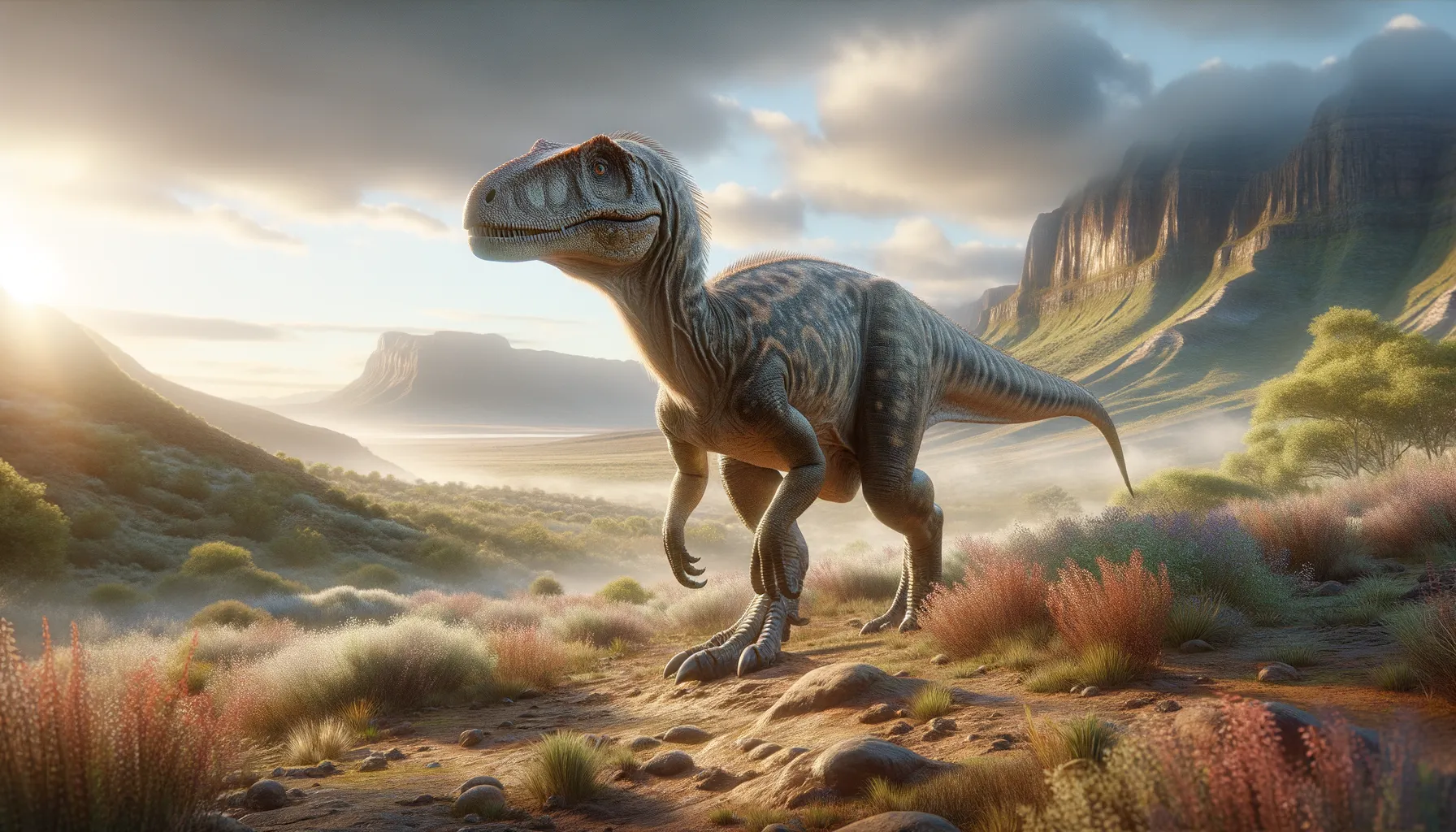
Lycorhinus
A herbivorous wanderer of ancient landscapes.
Period
Cretaceous
Length
Roughly 2 meters (6.6 feet) long.
Height
Approximately 1 meter (3.3 feet) tall.
Weight
Around 150 kilograms (330 pounds).
Lycorhinus was a small herbivorous dinosaur that roamed the Earth during the Early Cretaceous period. It belonged to the group of dinosaurs known as ornithopods. Found primarily in what is now South Africa, Lycorhinus featured a beak-like mouth adapted for a plant-based diet. Its fossils have shed light on the diversity of dinosaur life in ancient Gondwana, providing valuable insights into paleontological studies.
Diet
Lycorhinus was herbivorous, feeding primarily on local vegetation. Its beak-like mouth was adapted to chew plant material efficiently.
Hunting
Being a plant-eater, Lycorhinus did not hunt for food. Instead, it grazed on available flora, likely foraging for low-lying plants.
Environmental challenges
Lycorhinus lived in a rapidly changing environment. The shifting climates of the Cretaceous period posed challenges in terms of vegetation and resources. Competition with other herbivorous dinosaurs would have been significant, affecting its survival strategies.
Speed
Probably slow-moving.
Lifespan
Unknown, likely several decades.
First discovery
First discovered in South Africa in the early 20th century.
Fun Facts
- Lycorhinus was a small dinosaur that lived during the Early Jurassic period, approximately 190 million years ago.
- The name Lycorhinus means 'wolf snout', which comes from the Greek words 'lykos' (wolf) and 'rhinos' (nose or snout).
- Unlike its carnivorous namesake, Lycorhinus was actually a herbivore, feeding on plants.
- Lycorhinus was part of a group of dinosaurs known as heterodontosaurs, characterized by having different types of teeth in their mouth.
- This dinosaur was relatively small, about the size of a large turkey, making it quite agile and quick.
- Lycorhinus was discovered in South Africa, and its fossils give scientists clues about the environment it lived in millions of years ago.
- It had cheek teeth adapted for chewing, which helped it break down tough vegetation in its diet.
Growth and Development
Lycorhinus hatched from eggs and grew rapidly to reach its adult size. This fast growth was essential for survival, allowing young individuals to better escape predators. Like other ornithopods, its development involved significant changes in limb structure as it aged.
Habitat
Lycorhinus inhabited regions with abundant vegetation and water sources. The climate was relatively warm, conducive to a lush plant life. Its environment was shared with a variety of other dinosaurs and ancient animal species.
Interaction with other species
Lycorhinus likely engaged in competition with other herbivores for food resources. It might have also played a role in the ecosystem as prey for larger carnivorous dinosaurs. Plant availability and competition influenced its interactions within its ecosystem.
Natural lifespan
Its lifespan was likely in the range of several decades.
Reproduction
Lycorhinus reproduced by laying eggs, with clutches likely protected by natural camouflage. Parental care is unclear, but like many dinosaurs, hatchlings were vulnerable to predation.
Social behaviour
Lycorhinus may have lived in groups, which would offer protection and aid during foraging. Social living could help in effectively navigating their environment and deterring predators.
Fossil locations
Fossils of Lycorhinus have been predominantly found in South Africa. These findings provide crucial information about the distribution of ornithopods on the ancient supercontinent of Gondwana.
